Taking Care of Suede
Cleaning and conditioning suede is rarely done properly, and is usually done using rather harsh, smelly, chemicals.
The biggest concern with suede is staining, which is why spray-on suede protector is so popular. While this will protect the suede from getting stained to some degree, it is not that good for the longevity of the leather.
The trick is to get over the concern of your suede getting stained, knowing that it can be cleaned without too much trouble, and without harsh chemicals.
Of course you want to avoid getting stains on your suede if you can, and suede does stain rather easily.
The first thing to understand is that water is not the enemy of suede, if used properly. Water will stain suede, just like any other liquid. But, if water is used for cleaning, and covers the entire suede product all at once, staining by water can be avoided. You will want to use water to help clean your suede.
Water by itself will probably not be sufficient to clean your suede, so you will want to use something designed for cleaning. The best thing I have found is shampoo. I actually use American Crew as my personal shampoo, mainly because it uses coconut oil for the conditioner, and it is specifically a men’s shampoo. The coconut oil in the shampoo also works great as a conditioner for the leather.
In my example I have used a casual leather sneaker with a suede cap toe. The toe has a stain that came from who knows where; I just looked down one day and there it was. I was hoping that it was honey or something similar with a sugar type base that would dissolve easily in water, but it could have been cooking oil which is more difficult to remove.
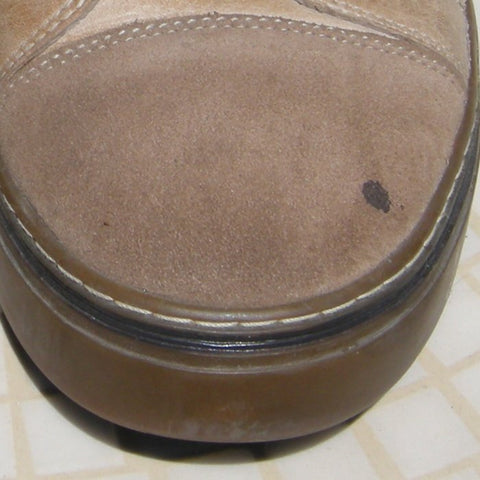
Before I begin my cleaning I gather what I need to do the job: I like to use a sea wool sponge to soak leather (suede, calf or whatever), I use a nylon bristle fingernail brush for brushing suede, I needed about a tablespoon of conditioning shampoo (with coconut oil), and of course water (bottled is better than tap, but either will work).
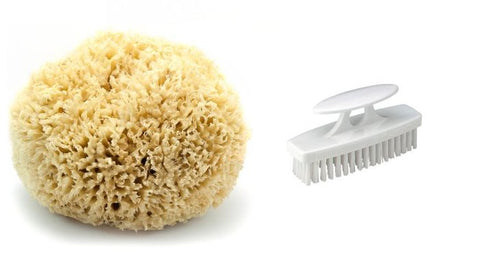
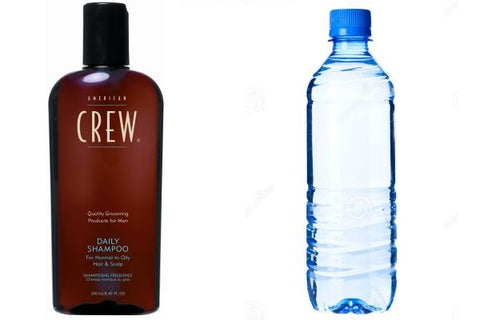
I was only cleaning the cap toe of a pair of shoes so a tablespoon was really too much, but I felt a teaspoon might have been too little. It doesn’t have to be exact; if you have too much you can just rinse it out, too little and you just add a little more shampoo.
Always add the shampoo to the water, never put the shampoo out of the bottle directly on the suede as the concentrated oils will stain the shoe.
Once you have mixed the shampoo thoroughly in the water (about 1 tablespoon to 2 cups of water [or one 16oz bottle of water]). Soak the wool sponge in the water, but not to the point it is dripping. Blot the sponge on the suede to transfer the water/shampoo mixture. Make sure the suede is saturated, doing one shoe at a time so it does not dry out.
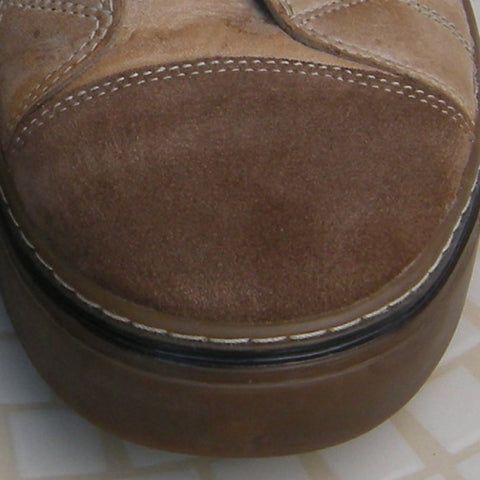
While the suede is still saturated take the fingernail brush and brush the suede briskly. Keep in mind that you are trying to scrub out the stain, but also brush the entire suede area (the whole shoe, if it is all suede). While the suede is wet the stain you are trying to remove may not be visible, but that doesn’t mean it’s gone. When the suede dries, if some semblance of the stain remains you can repeat the process.
Be sure to allow the suede to dry naturally. Forcing suede to dry (like using a blow dryer) will damage the leather.
If you want to make sure all of the shampoo has been remove from the suede, you can rinse out the sponge in clean water and repeat the cleaning process with just water.
Once the suede is dry and clean you can brush it again to smooth out the desired direction.
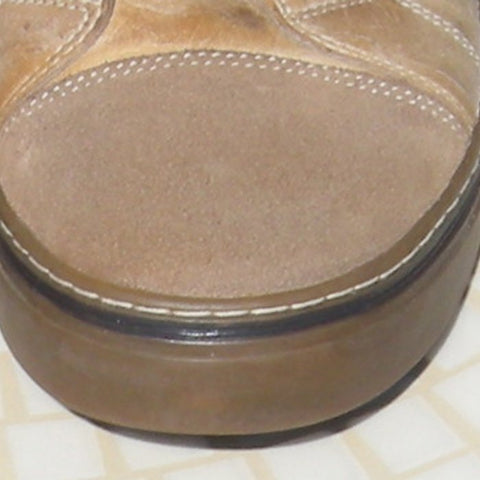
Note: We do not sell any specific care products for suede. This is our recommended process for suede care. It was written by Glen the creator of our formulas. It was originally posted over on the Old Leather Shoe Blog, and has been shared here with his permission.

Hi Michele – I don’t know how to translate the whole article. But if you use Google Chrome, you can “Translate Page”. https://support.google.com/chrome/answer/173424
Hopefully that helps!
Pls italian translation